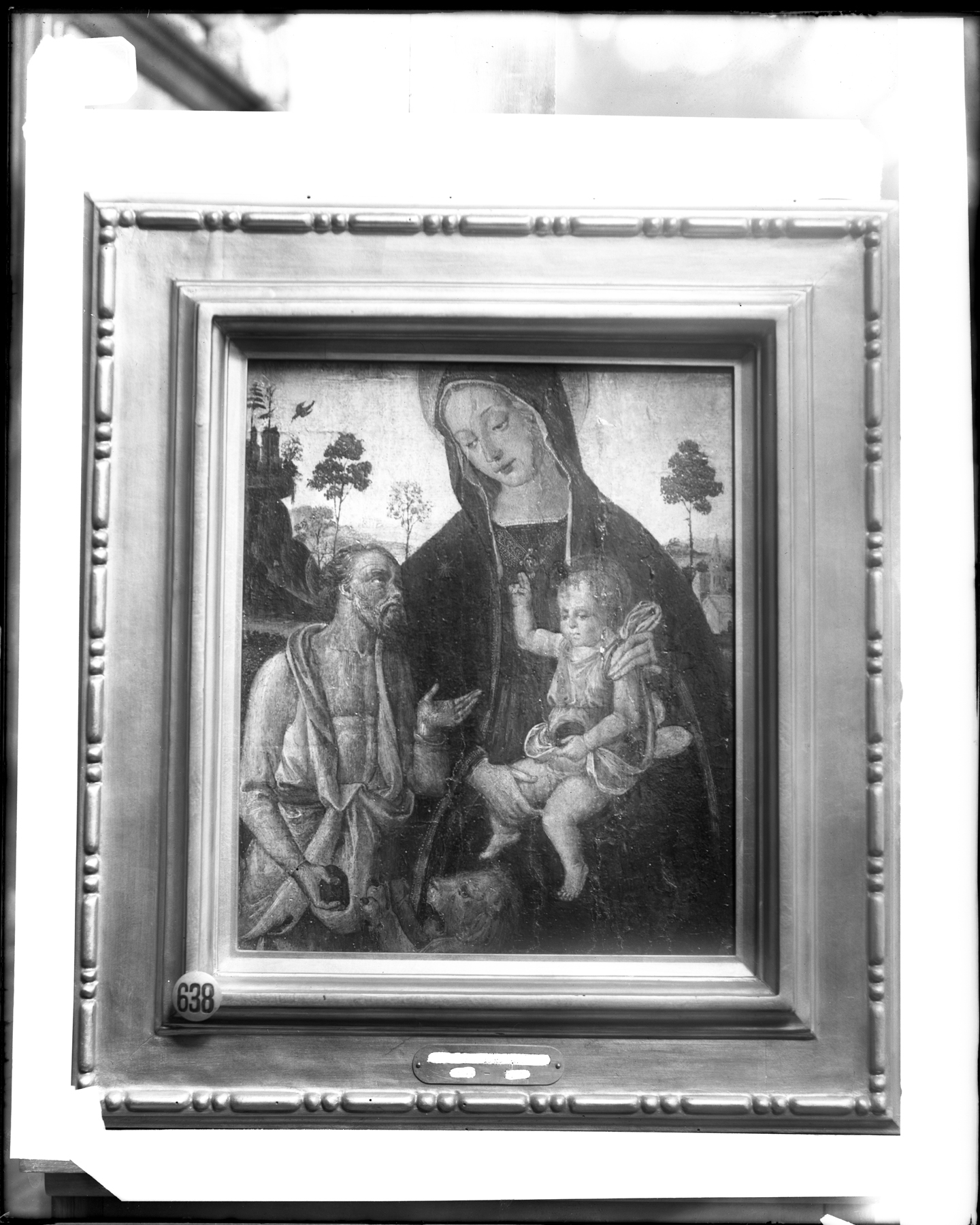Madonna and Child with St Jerome
(Renaissance Europe )
In this private devotional panel the Madonna and Child are adored by Saint Jerome (ca. 347-420 CE), renowned during the Renaissance as a model example of piety and learning. Jerome holds a rock, a reference to the years he spent in the wilderness beating a stone against his chest as a form of “penitence,” or meditation on Christ’s suffering (see Walters 37.1089). The saint also appears with his faithful companion, a lion, which he is said to have tamed by removing a thorn from its paw.
The painting is by an anonymous artist working in the style of Bernardino Pinturicchio, one of the most famous painters in Italy during the late 1400s and a particular favorite of the popes. Pinturicchio spent much of his career painting important altarpieces and fresco cycles in both Rome and his native Perugia in central Italy, and therefore accumulated many followers throughout Italy.
Provenance
Provenance (from the French provenir, 'to come from/forth') is the chronology of the ownership, custody, or location of a historical object. Learn more about provenance at the Walters.
Don Marcello Massarenti Collection, Rome [date and mode of acquisition unknown] [1897 catalogue: no. 146, as Andrea del Verrocchio]; Henry Walters, Baltimore, 1902, by purchase; Walters Art Museum, 1931, by bequest.
Conservation
| Date | Description | Narrative |
|---|---|---|
| 1/1/1900 | Examination | examined for condition |
| 9/15/1941 | Treatment | repaired |
| 1/1/1957 | Treatment | repaired |
| 6/21/1963 | Treatment | examined for condition; inpainted; loss compensation; varnish removed or reduced |
Geographies
Italy, Perugia (Place of Origin)
Measurements
Painted surface H: 16 15/16 x W: 14 3/16 x D excluding auxiliary support: 3/8 in. (43 x 36 x 1 cm)
Credit Line
Acquired by Henry Walters with the Massarenti Collection, 1902
Location in Museum
Not on view
Accession Number
In libraries, galleries, museums, and archives, an accession number is a unique identifier assigned to each object in the collection.
In libraries, galleries, museums, and archives, an accession number is a unique identifier assigned to each object in the collection.
37.638




